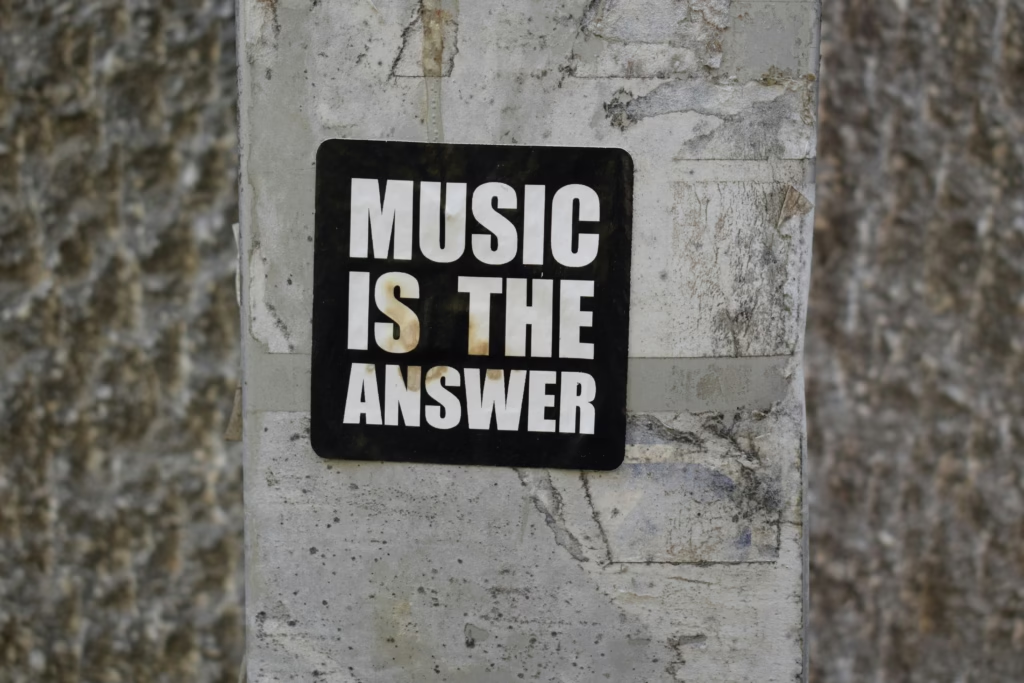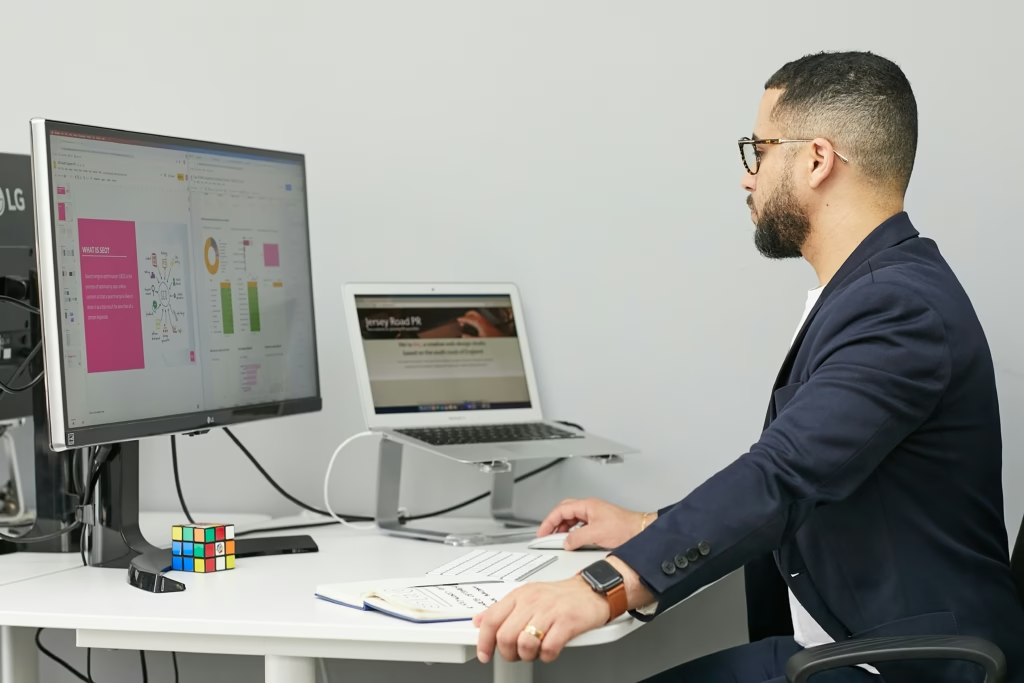Have you ever left a presentation knowing it was really great, but unable to put your finger on what made it so special? Maybe you’re not even sure what you learned. But you just know the speaker really moved you.
The reason? Delivery.
Delivery is everything. If there’s anything you take away from this article, it should be the following statistic. After studying 120 executive speeches, a Texas communications company in 2012 found:
“The sound of a speaker’s voice matters twice as much as the content of the message”
Quantified Impressions, 2012
I’ll repeat that. How you say something matters more than what you are saying. I can give the same exact speech to two people, but the one with superior control over their delivery will have the greatest impact on their audience.
One way you can immediately improve your delivery is vocal variety. In technical presentations, it’s easy to maintain a consistent tone of voice because you’re citing numbers, reading statistics, and pulling in a lot of complex terminology. Not a lot of material that lends itself to excitement, anticipation, or thunderous applause. But that’s your job – to make dry material come alive by delivering it in a compelling way.
Here are 3 techniques to adjust the content of your speech so that you naturally add variety to your tone of voice:
- Examples
- Rhetorical Questions
- Personal Opinions
In this post, we’ll break down how James Pavur made expert use of these 3 techniques during his winning pitch for the 2018 EOS Hackathon.
Technique #1: Examples
Pavur designed a new application “EOShield” to enhance the security of the EOSIO blockchain platform and was tasked with crafting a 3 minute pitch for his product. In the clip below, pay attention to tone of voice. Pavur is giving an overview of how the application works, using a relatively consistent and explanatory tone to hash clearly through the details. This would get boring after a while, but Pavur does something very subtle to retain the audience’s attention…
Presentation Clip 1
“For example”. Just those two words interrupted the steady, verging-on-boring tone and re-engaged the presentation. If you re-listen to the clip, you can feel the slight shift in energy at the exact moment those words were said.
The reason? You can imagine tone of voice like a rollercoaster. You’re on the rollercoaster because you want to go up, down, in loops, upside-down, and at slow speeds followed by very rapid ones. Going in a straight line is ok for a while, but if you’re going that way too long, the rollercoaster wasn’t designed right. The two words, “for example”, feel like taking a turn up a new hill. It changes the scenery and reminds you you’re not driving down a quiet residential street. You’re on a ride and exciting things are on the horizon.
As another case in point, listen to Pavur’s tone of voice in the following clip. This time he uses the lead-in phrase “so say there’s a…”:
Presentation Clip 2
When Pavur says “so say there’s a…”, you can immediately feel, the sensation of going in a new direction. Because instead of passively listening to additional facts, this segue signals to us that we need to start paying attention. The information we’re about to hear will help enhance and reframe information we’ve already received.
Consider using similar lead-in phrases to segue into an example and re-enliven your tone of voice during a presentation:
- “For example…”
- “For instance…”
- “Imagine…”
- “So say there’s a…”
- “Consider…”
- “Suppose that…”
Technique #2: Rhetorical Question
Another excellent way of deviating from consistent content and tone of voice is interjecting a rhetorical question. Notice how Pavur uses this device in the clip below:
Presentation Clip 3
The rhetorical question Pavur uses is, “So where does this data come from?” Up until this point, the mode of delivery has been direct and explanatory. Continuing the rollercoaster analogy, Pavur has been steadily driving forward, listing off important technical details one by one. When he throws in the rhetorical question, it marks a loop in the track, a pause in our steady, straight progression.
Rhetorical questions are powerful presentation devices because they do two things:
a) Makes the audience actively listen
The next time you hear a question, listen for the upward lilt in tone at the end. It’s a sound that marks curiosity, but also invitation. Through this shift in tone, rhetorical questions invite the audience back into the presentation, treating it more like a conversation. Although the audience won’t directly respond, they’ve become more engaged, subconsciously trying to piece together the answer to the rhetorical question themselves.
b) Segues from one section to another
Like the “for example” device discussed previously, rhetorical questions help lead into a new section. Instead of just going straight from one topic to another, you can sandwich a rhetorical question in between them to smooth the transition. It not only re-enlivens your tone of voice by changing pace, but also subtly frames the next part of the presentation. The rhetorical question itself, after all, is exactly the question you will be addressing. By hearing it spoken out loud, the audience knows what to expect and is able to better process your material.
Technique #3: Personal Opinion
The third and final technique is personal opinion, one of the most effective techniques for re-enlivening the tone and pace of a presentation. Listen to Pavur’s use of this device in the following clip:
Presentation Clip 4
When we’re presenting, we implicitly create a social wall between ourselves and our audience. Being a speaker puts you on a (sometimes literal) pedestal, from which you talk down on and at an audience instead of with them in a mutual conversation. This can prevent the audience from truly engaging with you on a personal and empathetic level. A great presentation will break through the social wall at times and create opportunities for connection.
Personal opinion is one of the ways to do so. Notice what happens when Pavur says, “I think this is the coolest part of our application…” The tone shifts completely from presenter to person. It humanizes him as more than a source of information, rounding him out as a person with likes/dislikes and opinions about the information he’s presenting. Continuing our rollercoaster analogy, this is as if you’re in the rollercoaster enjoying the ride and suddenly realize all the people next to you are experiencing the exact same thing. Moments of empathetic connection like this one are the moments we most strongly remember.
Remember: as a presenter, you have to elevate the material you are discussing to make it come alive for your audience. You need to make them care about it, and the best way to do that is making it personal.
The next time you need to present technical material, consider finding a moment where you can insert how you feel about it.
- Tell the audience you loved working on something because it had a great impact on the company.
- Or tell them how horrible a process was until you improved it.
- Or, like we did at the beginning of this article, tell them what you think is the most important thing they should take away from your material.
(*As a reminder, for this article, it was the statistic on vocal quality being twice as important as content!)
Summary
When creating your own presentation, keep these 3 techniques for changing tone of voice in mind to keep your audience engaged, as Pavur did with his masterful oral delivery:



